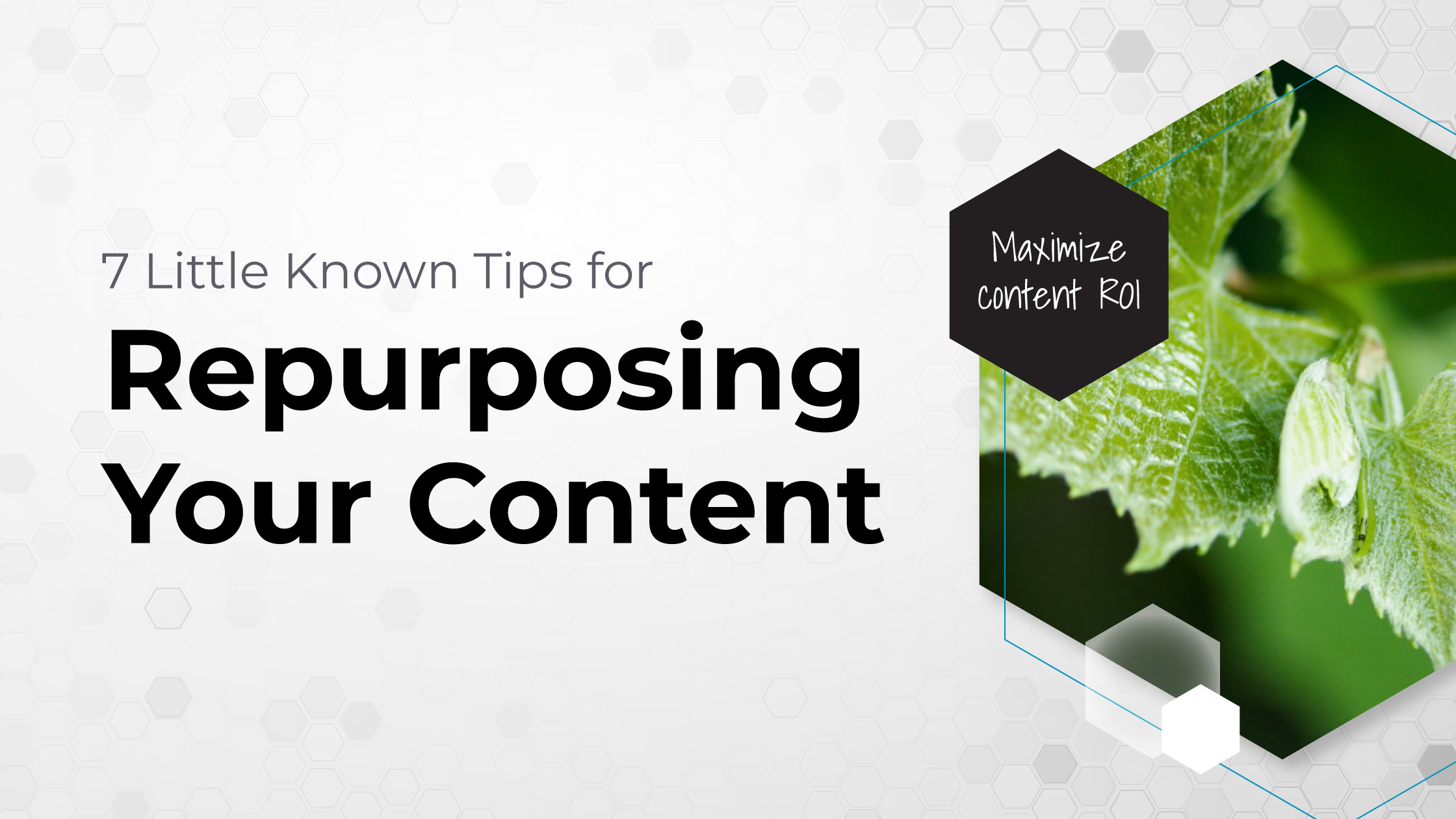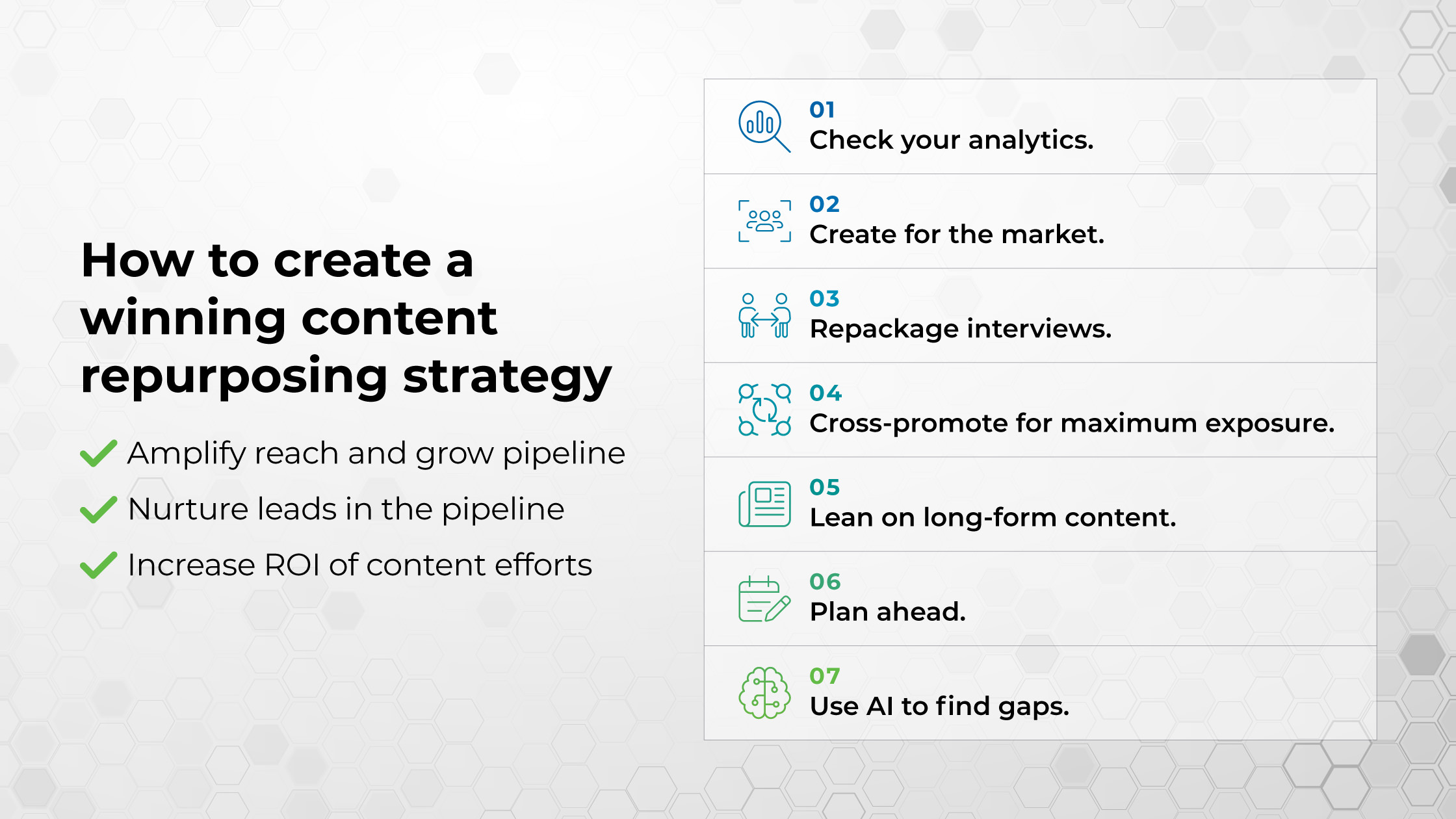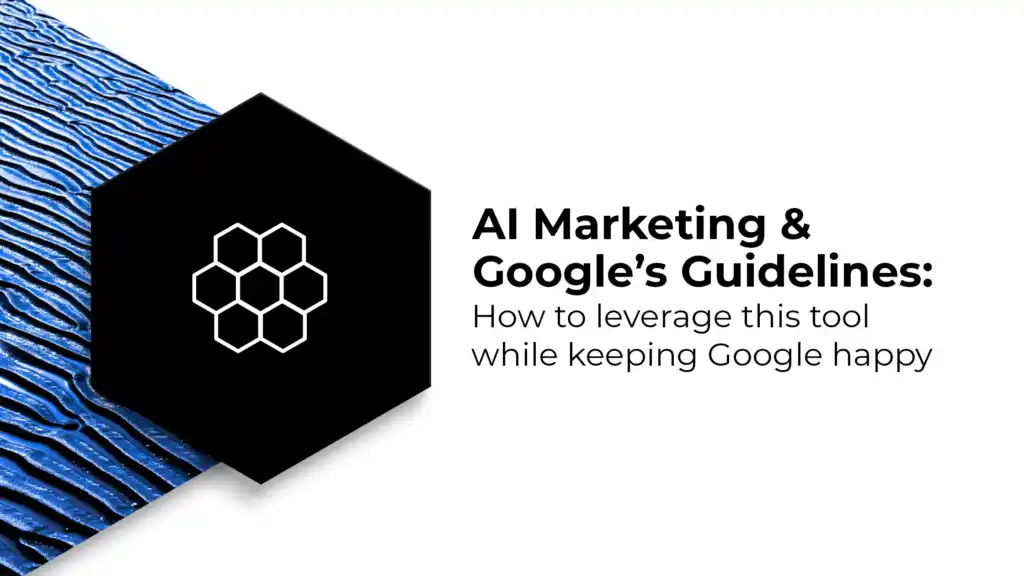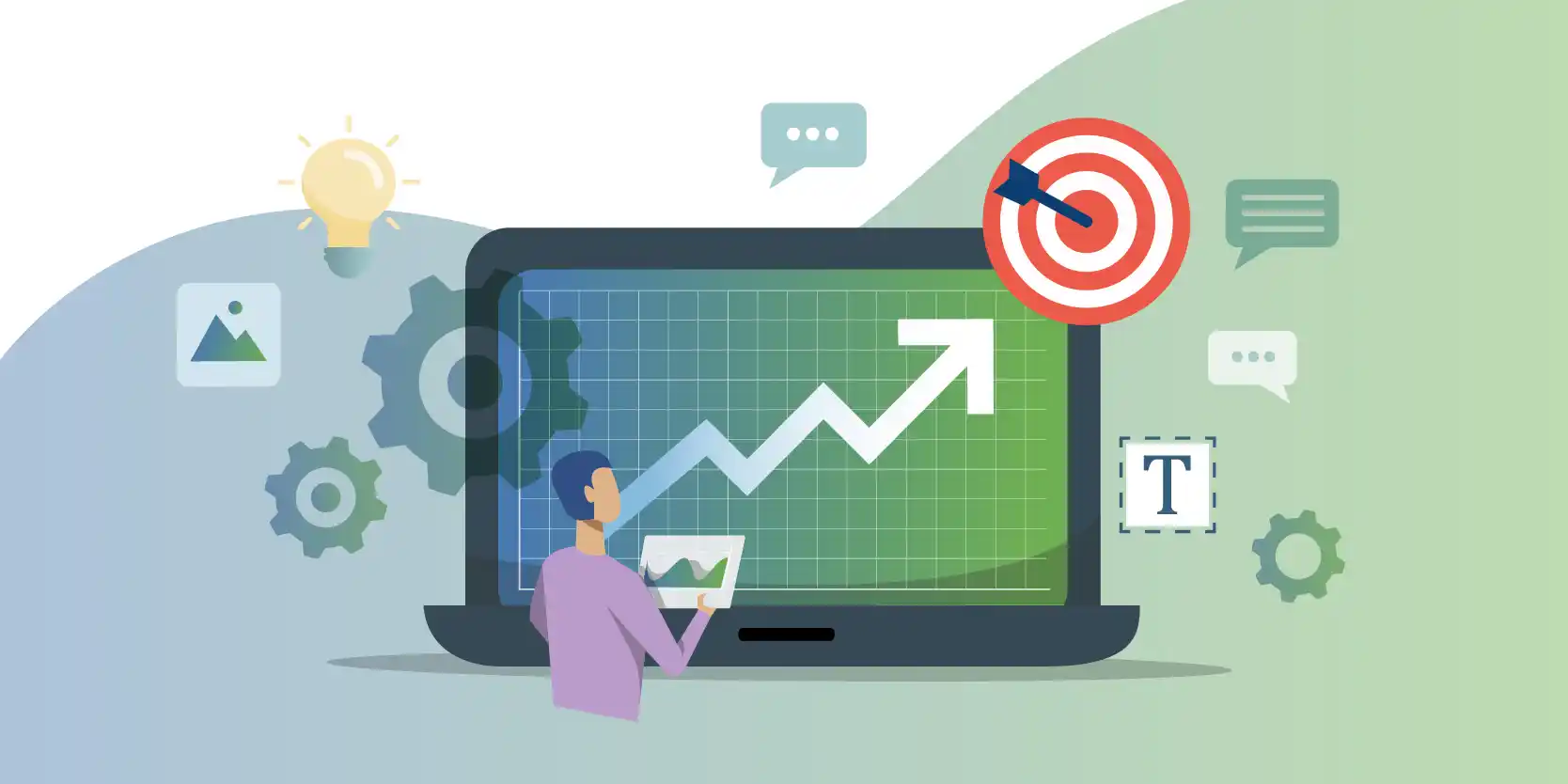
Among the many unsung heroes of content marketing, efficiency is one of the most important.
Picture this: You’ve poured your heart and soul into creating a stellar blog post. The analytics show it’s a hit, and organic traffic is spiking.
Sounds good, right? But…
- What if you could take that success and amplify it tenfold?
- What if that one piece of content could be the key to reaching thousands more?
- And what if you could do all this in a fraction of the time it takes to create another stellar blog post?
Welcome to the magical world of content repurposing!
Here, we strategically tailor and re-engineer content for different needs, platforms, and use cases. It’s a bit like content alchemy — allowing you to reach faraway internet lands with a SINGLE piece of content.
So, strap in while we learn:
- How to repurpose content to make a bigger impact?
- The hidden benefits of a robust repurposing strategy
- 7 insider tips for an effective repurposing campaign
- How to know what content is ideal for repurposing?
What is content repurposing?
Content repurposing is all about transforming existing content into new formats to maximize its reach and utility. It’s an easy — and very effective — way to scale your content marketing operations.
For example, let’s say you have a blog post that’s performing really well and bringing in a lot of organic traffic to your site. You can “repurpose” that one blog post by taking its content and making related but wholly separate pieces of content like:
- Short video series for TikTok, Instagram Reels, or YouTube Shorts
- PDF ebook that offers prospects value while capturing email addresses to nurture
- Educational webinar that brings more prospects into your sales pipeline
- Episode of a podcast
- Comprehensive Quora answer that will become a top response to a question your prospects often ask
- Social media lead magnet, plus A LOT more.
Instead of making entirely new content for each of these purposes, the content from just one blog post is reformatted to be contextually-appropriate for a host of other platforms.
Multiple content formats = multiple engagement touchpoints = upper funnel activity that leads to lower funnel conversion.
When it comes to growth marketing, all roads lead to brand awareness.
There’s a reason ALL category leaders, across every industry vertical (yes, this applies equally to B2B and eCommerce brands) concentrate the bulk of their marketing budgets on awareness.
And of that larger portion of their budgets directed toward the top of the funnel, the majority of the traffic generated comes from organic and direct sources.
And what, do you ask, is attracting all that organic and direct traffic? High-value content is the answer.

Understanding the Rule of Five in Content Repurposing
The “Rule of Five” is a cornerstone scaling strategy in content marketing. Here’s the premise:
For every one standout content idea, you should be able to produce (at least) five additional and distinct formats.
For instance, using the example of our blog post from above, we know that we can easily repurpose it into five other formats:
- Video
- Infographic
- Podcast
- Social media post (likely, more than one)
- Email newsletter or nurture content.
You certainly don’t have to stop at five — we regularly double that number for our client-partners. There are endless opportunities to repurpose A+ content.
But this “rule of five” framework is valuable because it keeps the entire team focused on maximizing the potential of every idea, which then expands its reach across various platforms and audiences.
In essence, employing a content repurposing strategy is all about milking every piece of content for maximum impact while maintaining maximum efficiency.
The key to successful content repurposing: Repurpose content that data has shown is HIGHLY valuable and relevant to your customer journey. Repurposing for its own sake is never the goal.
Repackaging your original content
Some people use the terms “content repurposing” and “content recycling” interchangeably, but they’re not one and the same.
Recycling implies that something is old, outdated, or not useful in its current form anymore.
But content repurposing takes already excellent content and reshapes it so it can find a new audience.
Content repurposing is less like recycling and more like repackaging.
Unlike transforming an empty wine bottle into a decorative vase (that’s recycling), content repurposing is more like zeroing in on the exact grape vine that produced that award-winning bottle of wine, and then propagating that vine to produce a thousand other lush grape vines.
Whether it’s breaking down a webinar into a series of bite-sized social media videos or converting a comprehensive blog post into an engaging infographic, repurposing your content allows you to tap into different audience preferences and consumption habits, ensuring your message is delivered far and wide.
And because you’ve now spread that A+ content across different platforms, thereby reaching new audiences, you’re drawing a lot more people into your brand’s marketing pipeline.
And the more people in your pipeline, the higher your overall ROI will be.

What are the benefits of content repurposing?
Content repurposing isn’t just applying a fresh coat of paint onto the same content — it’s more like cloning that content and turning those clones into standalone creations, with minimal extra work.
When you properly target your repurposed content, apart from all the time saved, you can expect additional benefits like:
1. Reach a wider audience
Repurposing allows your content to appeal to different segments of your audience who consume content differently and/or in different locations.
Some users prefer reading blog posts, while others prefer listening to podcasts. Some users love TikTok, while others never leave LinkedIn.
Content repurposing allows you to take your content and disseminate it everywhere your potential users are.
2. Maximize content ROI
Repurposing content allows you to multiply the value of the same content, across multiple channels, to reach more people and maximize your return.
In short: When you reach a wider audience, you’re maximizing the potential for a higher ROI.
But if you’re only ever living by the “rule of one” (i.e. only making content for one purpose at a time), you’re not maximizing the potential for that content to flourish in other formats.
3. Improve your SEO
Consistently publishing high-quality content across multiple channels is an essential component of every successful SEO strategy. Repurposing high-performing content to support SEO efforts leads to benefits like:
#1: Google looks favorably on high-intent signals, which increases the likelihood that your brand will rank well in search results and therefore attract even more organic traffic.
#2: SEO also directly impacts paid media performance. Google will suppress paid campaigns if those campaigns lead users to a poorly optimized domain. Learn more about this here.
#3: Well-liked content will result in high-quality backlinks, which increases brand awareness, brand credibility, and also improves Google’s estimation of your domain authority.
SEO performance also significantly impacts SEM. Explore our deep dive on that here:
SEO vs SEM: How They’re Different & How They Work Together
Looking to boost your online presence? Learn how SEO and SEM work together to achieve your digital marketing goals. Read now!
Content repurposing techniques
Repurposing is so much more than merely copying and pasting content from one place to another — it’s about strategically re-imagining and re-crafting content to expand its lifespan, boost functionality, and enhance reach.
Using that excellent blog post example from earlier, here’s how to transform that blog post into an ebook lead magnet for an exit-intent email list popup:
- Redesign the layout and add high-quality images to make it visually appealing.
- Add additional context, testimonials, or expert opinions to buttress main points.
- Include a checklist or worksheet to help readers take action.
- Expand the original content with updated research.
- Add a “Further Reading” section that links to other resources on the topic.
- Compel readers to take the next step in your funnel with a strong CTA.
Taking these extra measures to enhance this blog post can drastically increase the perceived value of this content, making this new ebook a highly compelling lead magnet for your popup form.
And because it has higher value than the original blog post, you can charge for it — in this case, by requesting the user’s email, which they’ll be happy to hand over because this “new” content is chock-full of value.
In executing this repurposing framework over and over again, you’ll be able to squeeze every last drop of ROI out of your content operations.
Content repurposing offers opportunities for both the short and long term.
Earlier in this blog post, we shared a repurposing example for turning a single content idea into five formats that could be published immediately across multiple channels.
But our ebook example above shows how a blog post published in January can produce evergreen ebook content that serves hundreds or even thousands of customers over the course of many months or even years.
7 tips & tricks for creating a winning content repurposing strategy

- Check your analytics. Your highest performing pieces of content are the ones that are clearly resonant with your audience. Whether it’s an Instagram post with thousands of likes or a blog post bringing in tons of traffic, identify your highest performing content and let that be your starting point.
- Create for the market. Assess where in the funnel your content is supposed to be targeting, and then understand if users on a different platform are usually at a different point in the funnel. If so, adjust the targeting accordingly.
- Repackage interviews. Interview content is always easy to transform into blog articles, infographics, or even shorter video snippets suitable for platforms like TikTok or Instagram. Whenever your leadership team and subject matter experts speak publicly, record and repackage.
- Cross-promote for maximum exposure. Share your repurposed content across different channels. For instance, you can promote your Medium blog post with a short snippet on LinkedIn and an infographic on Instagram.
- Lean on long-form content. When long-form content is created to a high standard, it will offer up a goldmine of detailed information. Sections of these in-depth pieces can be the genesis of new blog posts, infographics, presentations, short videos, and more.
- Plan ahead. Integrate repurposed content into your editorial content calendar to ensure a steady flow of content propagation across all platforms.
- Use AI to find gaps. Content marketing is all about finding gaps that excellent content can fill. AI tools can help you identify where there’s a need in the market for specific kinds of content, allowing you to repurpose your content to fill these gaps.
Speaking of AI, we’ve got a clear POV on the use of artificial intelligence in the creation of marketing content. Check it out here:
AI Marketing and Google’s Guidelines
Artificial intelligence (AI) is quickly revolutionizing the digital marketing landscape, empowering businesses with advanced tools and capabilities. To keep this conversation as practical as possible, let’s dig into the AI impact on marketing by zooming in on 6 marketing activities that AI is uniquely positioned to support.
Which content should I repurpose?
Choosing the right content to repurpose is pivotal in maximizing the impact of your efforts.
After you’ve reviewed your analytics and found things that are currently performing well (or have performed well in the past), you’re ready to start repurposing.
Evergreen content, which remains relevant over time, is a prime repurposing candidate due to its enduring value.
For most brands, the most leveraged starting point is to focus on content that will be relevant in 3 years, so you don’t have to repeat this whole process every 3 months.
Also, consider content that may have been overlooked or underappreciated in its original format. Sometimes, a topic that didn’t shine as a blog post could go viral on Instagram, or vice versa. A lengthy whitepaper or a case study could be great repurposed content for social media.
If your user persona and market research shows you that an idea was highly applicable to your ideal customers/clients, maybe it just needs another chance in order to shine somewhere else.
Again, it’s crucial to understand the market and how you’re drawing people into your funnel when choosing which content to repurpose and where to repurpose it.
We (lovingly) challenge you to break the habit of viewing your content as a single-use asset, and instead reconceptualize it as a wellspring of opportunities to transform, repackage, and redistribute the key narrative elements that will keep prospects moving through your funnel.
TL;DR on content repurposing
- Don’t stop at one platform or format when creating content. Repurpose content to amplify reach and engage diverse audiences across many platforms.
- Every stellar content idea should be repurposed into at least five formats. If you can think of more than five, that’s great, but five is the minimum.
- Content repurposing is not necessarily about taking outdated or “bad” content and trying to make it better. It’s about taking great content that already resonates and reshaping it to connect with new audiences in a variety of locations, thereby boosting its ROI.
- Base your repurposing decisions on analytics and high-performing evergreen content, ensuring prolonged relevance and broader engagement with the market.






